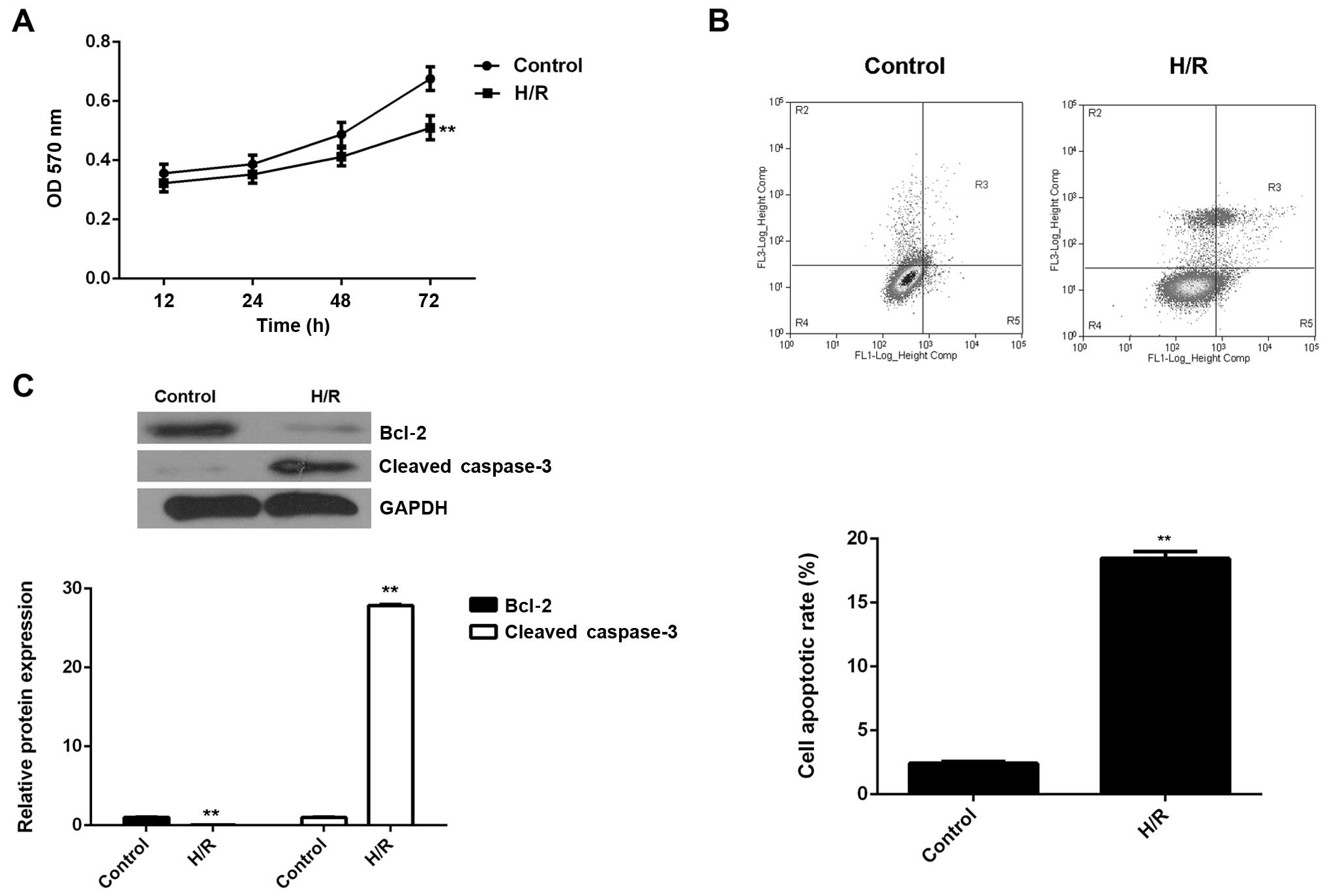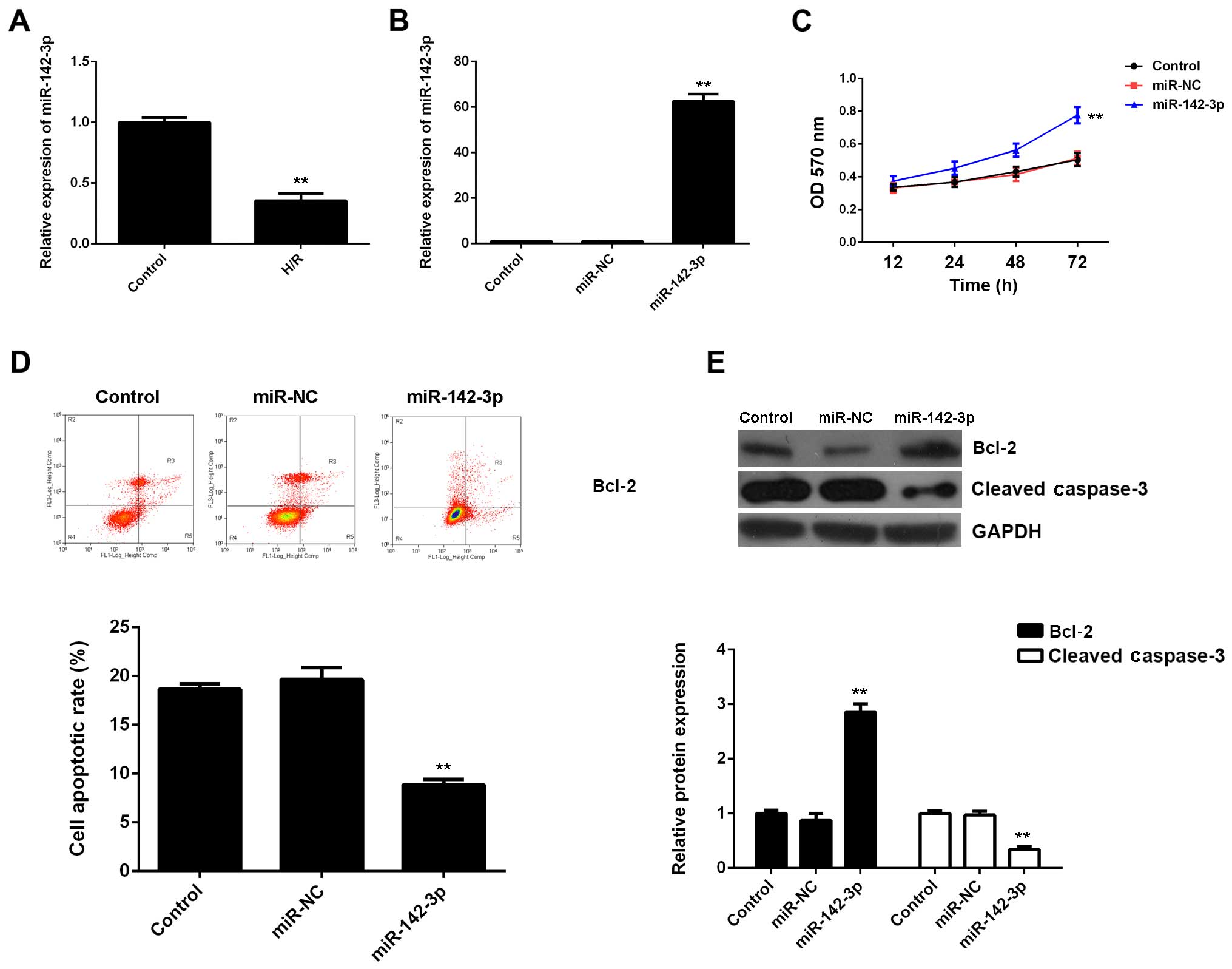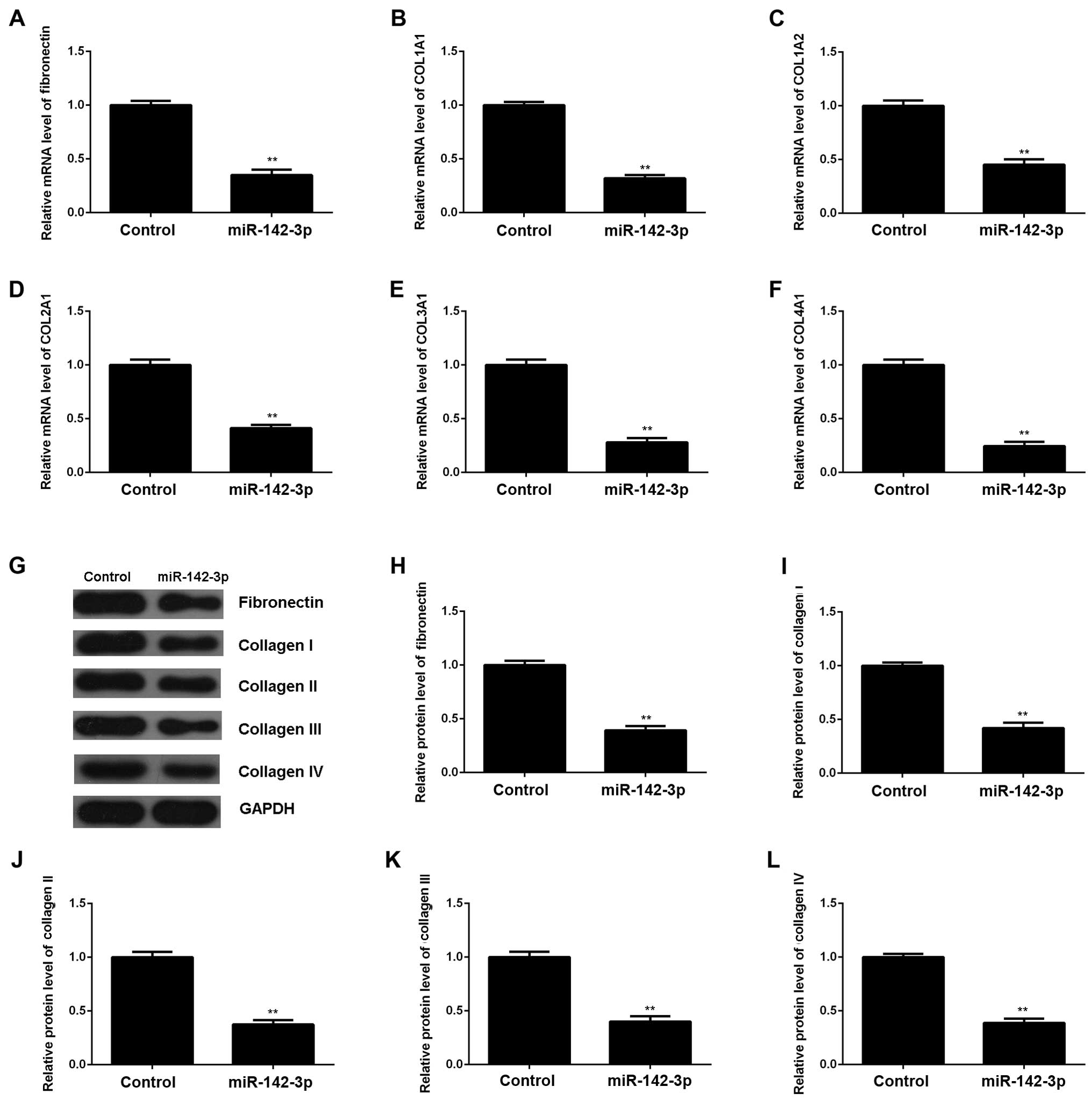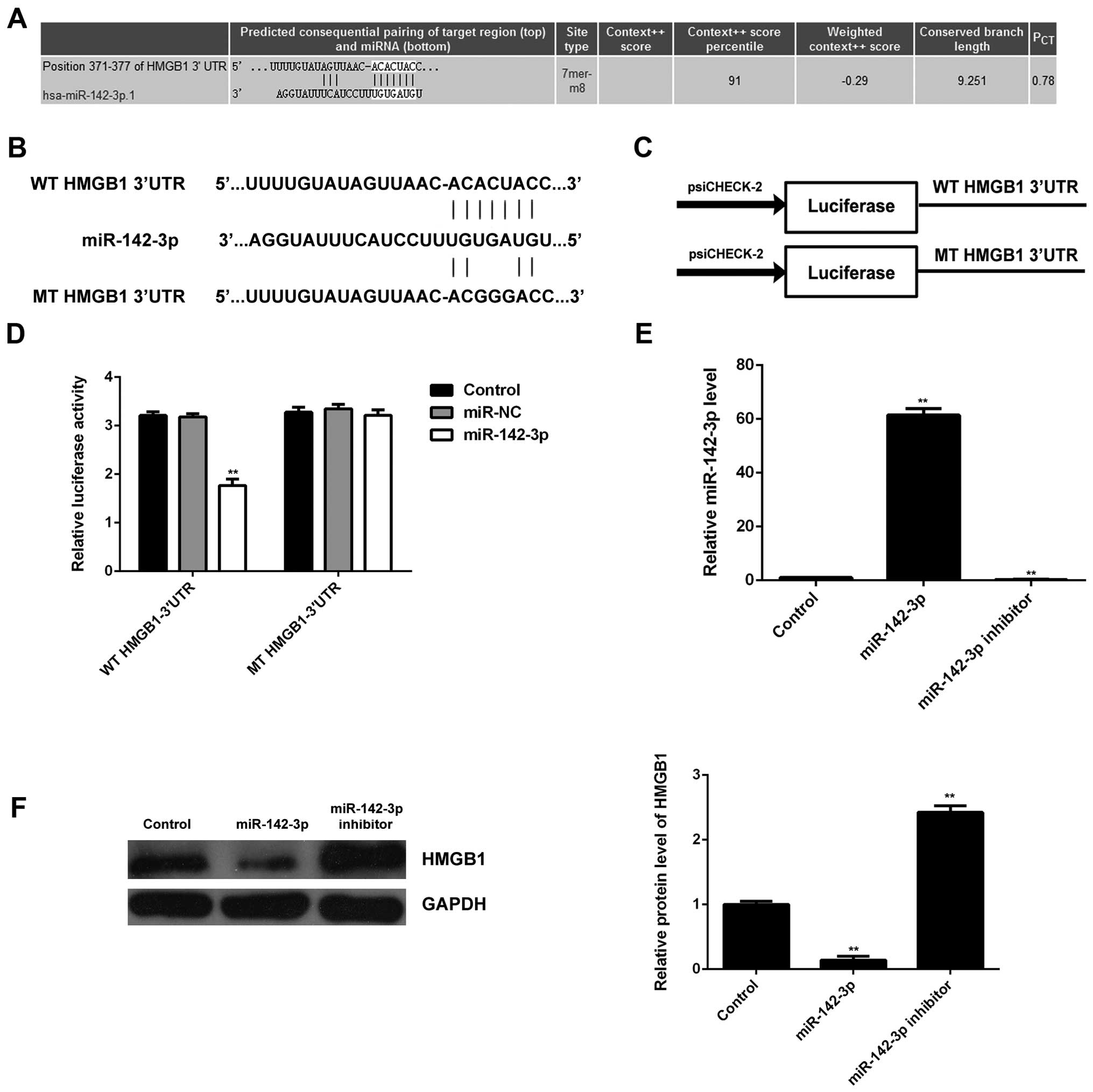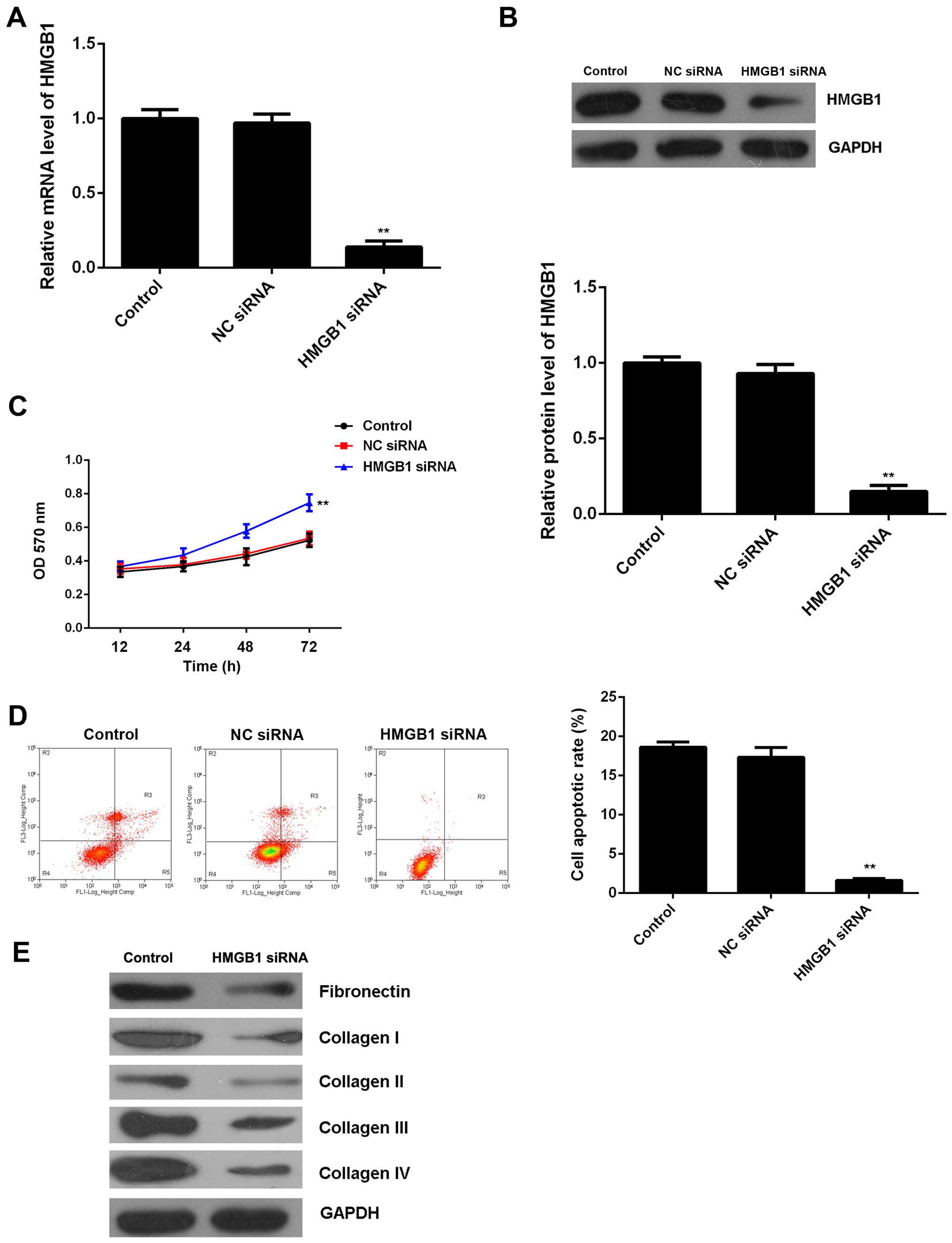|
1
|
Yong KW, Li Y, Huang G, Lu TJ, Safwani WK,
Pingguan-Murphy B and Xu F: Mechanoregulation of cardiac
myofibroblast differentiation: implications for cardiac fibrosis
and therapy. Am J Physiol Heart Circ Physiol. 309:H532–H542. 2015.
View Article : Google Scholar : PubMed/NCBI
|
|
2
|
Korkmaz-Icöz S, Lehner A, Li S, Vater A,
Radovits T, Hegedűs P, Ruppert M, Brlecic P, Zorn M, Karck M and
Szabó G: Mild Type 2 diabetes mellitus reduces the susceptibility
of the heart to ischemia/reperfusion injury: identification of
underlying gene expression changes. J Diabetes Res.
2015:3964142015. View Article : Google Scholar : PubMed/NCBI
|
|
3
|
Ye Y, Birnbaum GD, Perez-Polo JR, Nanhwan
MK, Nylander S and Birnbaum Y: Ticagrelor protects the heart
against reperfusion injury and improves remodeling after myocardial
infarction. Arterioscler Thromb Vasc Biol. 35:1805–1814. 2015.
View Article : Google Scholar : PubMed/NCBI
|
|
4
|
Wang J, Ji SY, Liu SZ, Jing R and Lou WJ:
Cardioprotective effect of breviscapine: inhibition of apoptosis in
H9c2 cardiomyocytes via the PI3K/Akt/eNOS pathway following
simulated ischemia/reperfusion injury. Pharmazie. 70:593–597.
2015.PubMed/NCBI
|
|
5
|
Li R, Xiao J, Qing X, Xing J, Xia Y, Qi J,
Liu X, Zhang S, Sheng X, Zhang X and Ji X: Sp1 mediates a
therapeutic role of MiR-7a/b in angiotensin II-induced cardiac
fibrosis via mechanism involving the TGF-β and MAPKs pathways in
cardiac fibroblasts. PLoS One. 10:e01255132015. View Article : Google Scholar
|
|
6
|
Ambros V: The functions of animal
microRNAs. Nature. 431:350–355. 2004. View Article : Google Scholar : PubMed/NCBI
|
|
7
|
Ji X, Wu B, Fan J, Han R, Luo C, Wang T,
Yang J, Han L, Zhu B, Wei D, et al: The anti-fibrotic effects and
mechanisms of microRNA-486-5p in pulmonary fibrosis. Sci Rep.
5:141312015. View Article : Google Scholar : PubMed/NCBI
|
|
8
|
Bartel DP: MicroRNAs: genomics,
biogenesis, mechanism, and function. Cell. 116:281–297. 2004.
View Article : Google Scholar : PubMed/NCBI
|
|
9
|
Liu J, Li W and Wang S, Wu Y, Li Z, Wang
W, Liu R, Ou J, Zhang C and Wang S: MiR-142-3p attenuates the
migration of CD4+ T cells through regulating actin
cytoskeleton via RAC1 and ROCK2 in arteriosclerosis obliterans.
PLoS One. 9:e955142014. View Article : Google Scholar
|
|
10
|
Nair N, Kumar S, Gongora E and Gupta S:
Circulating miRNA as novel markers for diastolic dysfunction. Mol
Cell Biochem. 376:33–40. 2013. View Article : Google Scholar
|
|
11
|
Ellis KL, Cameron VA, Troughton RW,
Frampton CM, Ellmers LJ and Richards AM: Circulating microRNAs as
candidate markers to distinguish heart failure in breathless
patients. Eur J Heart Fail. 15:1138–1147. 2013. View Article : Google Scholar : PubMed/NCBI
|
|
12
|
Voellenkle C, van Rooij J, Cappuzzello C,
Greco S, Arcelli D, Di Vito L, Melillo G, Rigolini R, Costa E, Crea
F, et al: MicroRNA signatures in peripheral blood mononuclear cells
of chronic heart failure patients. Physiol Genomics. 42:420–426.
2010. View Article : Google Scholar : PubMed/NCBI
|
|
13
|
Kee HJ, Park S, Kwon JS, Choe N, Ahn Y,
Kook H and Jeong MH: B cell translocation gene, a direct target of
miR-142-5p, inhibits vascular smooth muscle cell proliferation by
down-regulating cell cycle progression. FEBS Lett. 587:2385–2392.
2013. View Article : Google Scholar : PubMed/NCBI
|
|
14
|
Gruber HE, Hoelscher GL, Bethea S, Ingram
J, Cox M and Hanley EN Jr: High-mobility group box-1 gene, a potent
proinflammatory mediators, is upregulated in more degenerated human
discs in vivo and its receptor upregulated by TNF-α exposure in
vitro. Exp Mol Pathol. 98:427–430. 2015. View Article : Google Scholar : PubMed/NCBI
|
|
15
|
Chen M, Liu Y, Varley P, Chang Y, He XX,
Huang H, Tang D, Lotze MT, Lin J and Tsung A: High-mobility group
box 1 promotes hepatocellular carcinoma progression through
miR-21-mediated matrix metalloproteinase activity. Cancer Res.
75:1645–1656. 2015. View Article : Google Scholar : PubMed/NCBI
|
|
16
|
Diao H, Kang Z, Han F and Jiang W:
Astilbin protects diabetic rat heart against ischemia-reperfusion
injury via blockade of HMGB1-dependent NF-κB signaling pathway.
Food Chem Toxicol. 63:104–110. 2014. View Article : Google Scholar
|
|
17
|
Ding HS, Yang J, Chen P, Yang J, Bo SQ,
Ding JW and Yu QQ: The HMGB1-TLR4 axis contributes to myocardial
ischemia/reperfusion injury via regulation of cardiomyocyte
apoptosis. Gene. 527:389–393. 2013. View Article : Google Scholar : PubMed/NCBI
|
|
18
|
Li LC, Li DL, Xu L, Mo XT, Cui WH, Zhao P,
Zhou WC, Gao J and Li J: High-mobility group box 1 mediates
epithelial-to-mesenchymal transition in pulmonary fibrosis
involving transforming growth factor-β1/Smad2/3 signaling. J
Pharmacol Exp Ther. 354:302–309. 2015. View Article : Google Scholar : PubMed/NCBI
|
|
19
|
Zhang J, Shan WF, Jin TT, Wu GQ, Xiong XX,
Jin HY and Zhu SM: Propofol exerts anti-hepatocellular carcinoma by
microvesicle-mediated transfer of miR-142-3p from macrophage to
cancer cells. J Transl Med. 12:2792014. View Article : Google Scholar : PubMed/NCBI
|
|
20
|
Chai S, Tong M, Ng KY, Kwan PS, Chan YP,
Fung TM, Lee TK, Wong N, Xie D, Yuan YF, et al: Regulatory role of
miR-142-3p on the functional hepatic cancer stem cell marker CD133.
Oncotarget. 5:5725–5735. 2014. View Article : Google Scholar : PubMed/NCBI
|
|
21
|
Ghanbari R, Mosakhani N, Asadi J, Nouraee
N, Mowla SJ, Yazdani Y, Mohamadkhani A, Poustchi H, Knuutila S and
Malekzadeh R: Downregulation of plasma miR-142-3p and miR-26a-5p in
patients with colorectal carcinoma. Iran J Cancer Prev.
8:e23292015. View Article : Google Scholar : PubMed/NCBI
|
|
22
|
Summerer I, Unger K, Braselmann H,
Schuettrumpf L, Maihoefer C, Baumeister P, Kirchner T, Niyazi M,
Sage E, Specht HM, et al: Circulating microRNAs as prognostic
therapy biomarkers in head and neck cancer patients. Br J Cancer.
113:76–82. 2015. View Article : Google Scholar : PubMed/NCBI
|
|
23
|
Isobe T, Hisamori S, Hogan DJ, Zabala M,
Hendrickson DG, Dalerba P, Cai S, Scheeren F, Kuo AH, Sikandar SS,
et al: miR-142 regulates the tumorigenicity of human breast cancer
stem cells through the canonical WNT signaling pathway. Elife.
3:e019772014. View Article : Google Scholar :
|
|
24
|
Colamaio M, Puca F, Ragozzino E, Gemei M,
Decaussin-Petrucci M, Aiello C, Bastos AU, Federico A, Chiappetta
G, Del Vecchio L, et al: miR-142-3p down-regulation contributes to
thyroid follicular tumorigenesis by targeting ASH1L and MLL1. J
Clin Endocrinol Metab. 100:E59–E69. 2015. View Article : Google Scholar
|
|
25
|
John B, Enright AJ, Aravin A, Tuschl T,
Sander C and Marks DS: Human MicroRNA targets. PLoS Biol.
2:e3632004. View Article : Google Scholar : PubMed/NCBI
|
|
26
|
Liu Z, Wang Z, Han G, Huang L, Jiang J and
Li S: Ketamine attenuates high mobility group box-1-induced
inflammatory responses in endothelial cells. J Surg Res.
200:593–603. 2015. View Article : Google Scholar
|
|
27
|
Lea JD, Clarke JI, McGuire N and Antoine
DJ: Redox-dependent HMGB1 isoforms as pivotal co-ordinators of
drug-induced liver injury: mechanistic biomarkers and therapeutic
targets. Antioxid Redox Signal. 24:652–665. 2016. View Article : Google Scholar
|
|
28
|
Zhang J, Yong Y, Li X, Hu Y, Wang J, Wang
YQ, Song W, Chen WT, Xie J, Chen XM, et al: Vagal modulation of
high mobility group box-1 protein mediates
electroacupuncture-induced cardioprotection in ischemia-reperfusion
injury. Sci Rep. 5:155032015. View Article : Google Scholar : PubMed/NCBI
|
|
29
|
Singh V, Roth S, Veltkamp R and Liesz A:
HMGB1 as a key mediator of immune mechanisms in ischemic stroke.
Antioxid Redox Signal. 24:635–651. 2016. View Article : Google Scholar
|
|
30
|
Cai J, Wen J, Bauer E, Zhong H, Yuan H and
Chen AF: The role of HMGB1 in cardiovascular biology: danger
signals. Antioxid Redox Signal. 23:1351–1369. 2015. View Article : Google Scholar : PubMed/NCBI
|
|
31
|
Lytle KA, Depner CM, Wong CP and Jump DB:
Docosahexaenoic acid attenuates western diet-induced hepatic
fibrosis in Ldlr−/− mice by targeting the TGFβ-Smad3
pathway. J Lipid Res. 56:1936–1946. 2015. View Article : Google Scholar : PubMed/NCBI
|



